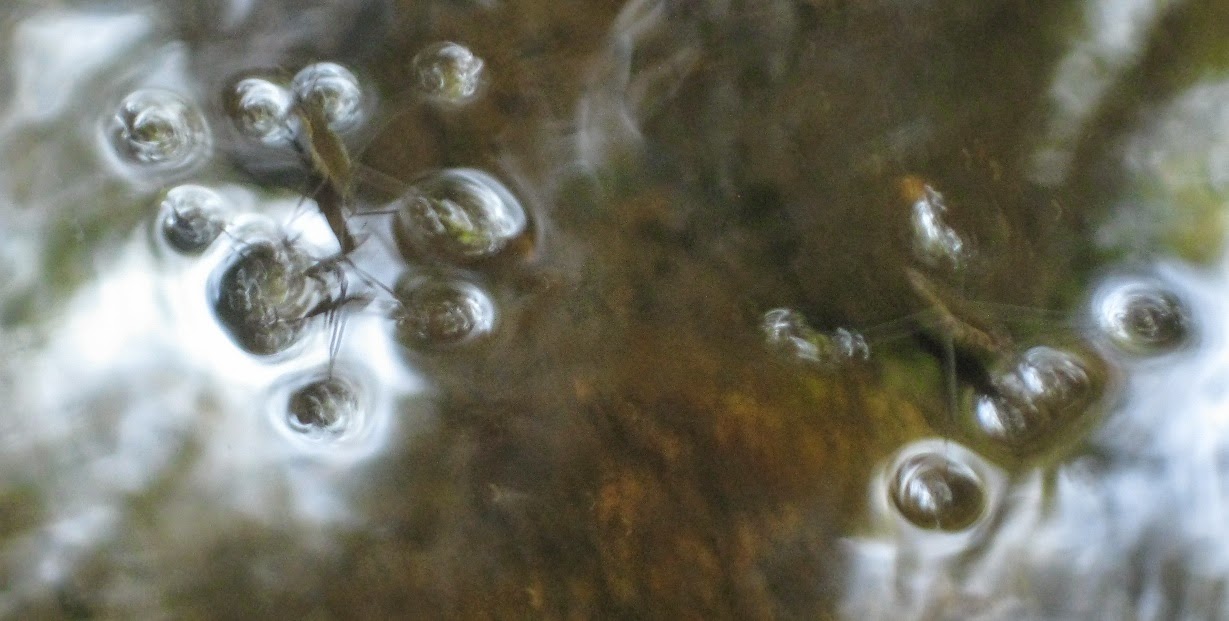The Goose Creek correctional facility at Point Mackenzie produces 1.5 million pounds of potatoes a year, according to someone at the Department of Corrections booth at the governor's picnic Saturday. They also had rhubarb, zucchini, and tomatoes on display. It's used to feed the prisoners there and at another facility. It's grown by the inmates under the guidance of a local farmer.
It was the produce that got me talking to corrections officer Rodney Ramirez, who does recruiting and training at the Academy. Our talk was wide ranging and I walked away impressed with his attitude toward the prisoners. And if I had any doubts, they were obliterated when a guy called out 'Ramirez' and talked to him with obvious respect about how he was doing now that he was no longer incarcerated.
I have to say that after I finished photoshopping five photos together, I thought maybe this guy looked like the rapper, DOC. But he had the black uniform and sunglasses. But the photo gives him a lot more attitude than he had. In fact he had none. If my son were incarcerated, I'd feel better knowing Ramirez was in charge. You can see the rhubarb on the right in the background.

In addition to growing food, inmates also crochet, make quilts, and wooden toys which, I was told, are donated to poor families for Christmas presents. A poster also had pictures of service dog and pet obedience training. Ramirez mentioned apprenticeships for carpentry, welding, and other trades.
I'm sure the governor's office sees absolutely nothing wrong with his picnic having lots of corporate sponsors - like ACS in this picture - but I can't help thinking if the governor can call on them to do favors like this, what kind of favors do they get from the governor? These are for profit corporations whose goal is maximum shareholder profit, so they aren't doing this unless they think it's going to increase that shareholder profit.
Of course, we don't need to wonder about what favors the governor has done for Conoco-Phillips or BP. Some folks are trying to take back his biggest favor to them by having people vote to repeal SB 21 in the August election. And the oil companies are spending millions to make sure Prop. 1 doesn't pass. You can see what millions can do when pass all the No on 1 signs around all over Anchorage.
The highlight of every governor's picnic is the free barbecued hot dogs and hamburgers. And people were willing to wait a long time for them. The lines looped around and around.
There was a separate, shorter line for seniors.
You could get on this simulator (in the background) and experience an earthquake.
The Unified Command Center trailer can be used at emergencies or situations where there are large crowds. The man inside said they'd been to the
Arctic Man. It can only be used on the road system. He didn't give me any examples of actual emergencies where it was needed and I wondered whether this was really just a fancy toy they bought in the name of emergency planning.
Here's the inside. There were two big screens showing the picnic just outside. I suggested a window would help, but he showed me how he could use the cam to look around and zoom in. He could even see if the outhouses were vacant or not. (He told me they didn't have a bathroom in the command - because then everyone would be wanting to come in to use it.) There was a table people could sit around and a second modular room.
I don't really know whether this was a good investment, I'm just asking questions at this point. The
NACS website FAQs has a little on the costs of vehicles like this:
What is the price range for a mobile communications vehicle?
NACS builds units that range in size, type, and capabilities. Pricing of the unit is determined by the Chassis type and the installed communications capabilities. The chassis can be a custom-built towable unit, gasoline powered unit or diesel powered unit. Installed communications equipment can range from simple agency radios to full-scale Mobile EOC. Our expertise is maximizing the vehicle based on the budget and communications needs of the agency. Since we install and integrate all of the available technology ourselves, we carefully manage cost and control the quality of the finished product. Price Range is $100,000.00 to $750,000.00.
The FBI booth looked like one of the most fun. In addition to getting to wear flak jackets they had some footprint identification activities.
As I was leaving this poster caught my attention. Every three hours. That would be eight per day or 240 a month or 2880 a year.
I found a site that gave vehicle-train collision information. I took the last two years and the first two on the list. The incidence of such collisions has declined significantly. Their number isn't that high, but it looks like this doesn't include person-train collisions.
| Year |
Vehicle-Train Collisions |
Fatalities |
Injuries |
| 1981 |
9.461 |
728 |
2,293 |
| 1982 |
7,932 |
232 |
944 |
| 2012* | 1,971 | 232 | 944 |
| 2013* | 2,087 | 251 | 929 |
http://oli.org/about-us/news/collisions-casulties
*The last two years weren't finalized numbers
I have to say that I like the idea of a governor's picnic each year. There are smaller events in other communities. It reflects the advantage of living in a state with a small population where anyone, literally, can get in to see the governor if they really want to.

















































